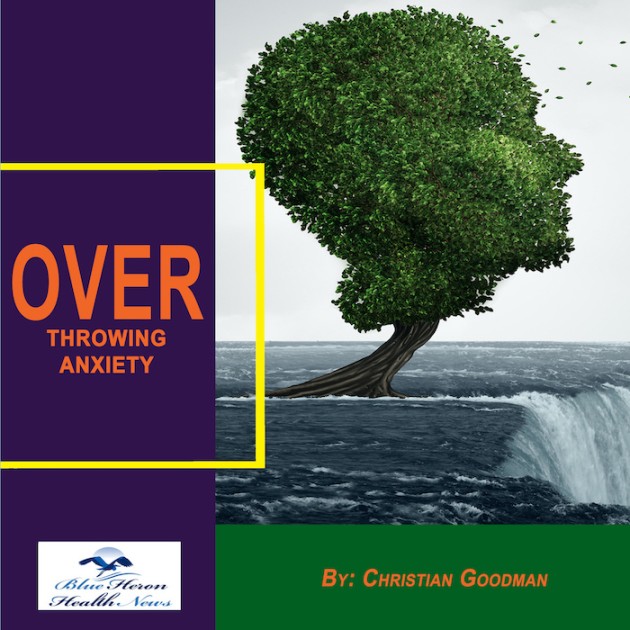
Overthrowing Anxiety™ This eBook includes a complete program to treat anxiety effectively. It guides you to learn the ways to find, understand, and accept the main cause of your anxiety and start using the techniques provided in it to treat the problem.
How can one manage migraines caused by sensory overload?
Managing migraines due to sensory overload, which may be produced by bright lights, loud sounds, pungent odors, or crowded spaces, needs a multi-level approach involving trigger identification, environmental modification, and coping mechanisms. How to do it effectively is here:
???? 1. Identify and Track Triggers
Maintain a migraine diary to record sensory exposures (e.g., loud music, fluorescent lights, perfume) and migraine patterns.
Use applications like Migraine Buddy or N1-Headache to monitor symptoms and triggers over a period of time.
???? 2. Create a Sensory-Safe Environment
Lighting:
Use soft, warm lighting or place dimmers in the home.
Wear FL-41 tinted glasses or blue-block lenses in light environments or working on screens.
Sound:
Wear noise-cancelling headphones in loud environments.
Use white noise machines or calming ambient sound apps to suppress harsh or abrupt sounds.
Smells:
Avoid pungent perfumes, chemical cleaners, or smoke.
Carry a face mask or perfume (e.g., lavender or peppermint) to mask unpleasant odors.
???? 3. Medical Management
Preventive medications (e.g., beta-blockers, anticonvulsants, CGRP inhibitors) may reduce sensitivity over time.
Acute medications like triptans, NSAIDs, or gepants may be used at the onset of a migraine.
Supplements like magnesium, riboflavin (B2), and coenzyme Q10 may reduce frequency if approved by your physician.
???? 4. Stress and Sensory Regulation Techniques
Mindfulness meditation, slow breathing, or progressive muscle relaxation can reduce nervous system hyper-reactivity.
Practice biofeedback therapy to become able to manage your body’s stress response.
CBT (Cognitive Behavioral Therapy) can reduce anxiety related to exposure to sensory stimuli, which in turn can trigger or worsen migraines as well.
???? 5. Prepare for Sensory Triggers
Have a migraine emergency kit: sunglasses, earplugs, meds, fluids, and an ice pack.
Limit screen exposure, or use filters on screens and regular breaks where screen exposure is an activating environment.
Plan off-time after rich-sensory activity (concert events, shopping centers, etc.) to rest in a dark, sound-reduced environment.
???? 6. Alter Work or Home Settings
Ask for changes at work or school (lowered lighting, quieter area).
Create a recovery space in the home that is dark, quiet, and cool.
Use apps or browser extensions to reduce brightness and noise while working (e.g., f.lux, Dark Reader, Calm).
????⚕️ 7. Consult a Migraine Specialist
If sensory triggers occur frequently or become disabling, consider:
A migrainous specialist neurologist.
Occupational therapists with experience in handling sensory processing disorders.
???? Tip Extra
Some people with sensory processing sensitivity (especially those with neurodivergent conditions like ADHD or autism) are more prone to sensory overload migraines. Sensory integration interventions tailored to their needs or a multidisciplinary consultation may then be beneficial in such cases.
Would you like help creating a customized plan or sensory toolkit to manage your migraines?
Ginger has traditionally been employed as a natural medication for many health conditions, and research suggests that it may have a number of benefits in alleviating migraines. It owes its effectiveness to its anti-inflammatory, anti-nausea, and pain-reducing abilities. The main benefits of ginger in migraine relief are as follows:
1. Anti-Inflammatory Effects
Migraines usually accompany inflammation of brain blood vessels and nerves.
Ginger contains gingerols and shogaols, chemical substances with recognized anti-inflammatory properties that are thought to suppress the inflammation related to migraine attacks.
These chemicals block the formation of prostaglandins, chemicals that trigger inflammation, pain, and swelling during migraines.
2. Relief from Nausea and Vomiting
Nausea is a common symptom of migraines, especially in migraine with aura or vestibular migraine.
Ginger is also well known for its antiemetic (anti-nausea) effects and is widely used to treat nausea caused by motion sickness, pregnancy, and chemotherapy.
Consuming ginger during a migraine attack can decrease nausea and vomiting, making one feel more comfortable during an attack.
3. Pain Relief Equivalent to Medication
A small clinical trial in Phytotherapy Research (2014) found that 250 mg of ginger powder was as effective as 50 mg of sumatriptan (a well-known migraine drug) in reducing the severity of migraines within 2 hours.
Ginger caused fewer side effects than sumatriptan, perhaps making it a safer choice for some individuals.
4. Few Side Effects
Ginger is safe and well-tolerated and is usually fine to take in small amounts.
Common side effects (when used in excess) are mild stomach upset, gas, or heartburn.
It may be especially appealing to those looking for non-pharmaceutical options or those who are sensitive to prescription migraine medications.
5. Simple to Use in Various Forms
Ginger can be used in a variety of forms:
Fresh ginger tea
Ginger capsules or powder
Ginger chews or candies
Essential oil (for inhalation or topical use)
Starting ginger at the onset of a migraine may yield the best results.
6. Potential Role in Preventive Care
While the majority of research focuses on acute relief, regular consumption of ginger (in small doses) can have the potential to reduce the frequency of migraines by reducing systemic inflammation and stabilizing gastrointestinal and vascular health.
Conclusion
Ginger is a stimulating natural option for short-term relief from migraines, particularly for pain reduction and nausea control. It’s cheap, available at most grocery stores, and usually side-effect-free. While it’s not a cure and won’t function as an alternate to doctor-recommended medication for extreme cases, it could be a good complementary method for dealing with migraine attacks.
Would you prefer a simple recipe for ginger tea or a dosage schedule based on current studies?
Overthrowing Anxiety™ This eBook includes a complete program to treat anxiety effectively. It guides you to learn the ways to find, understand, and accept the main cause of your anxiety and start using the techniques provided in it to treat the problem.
